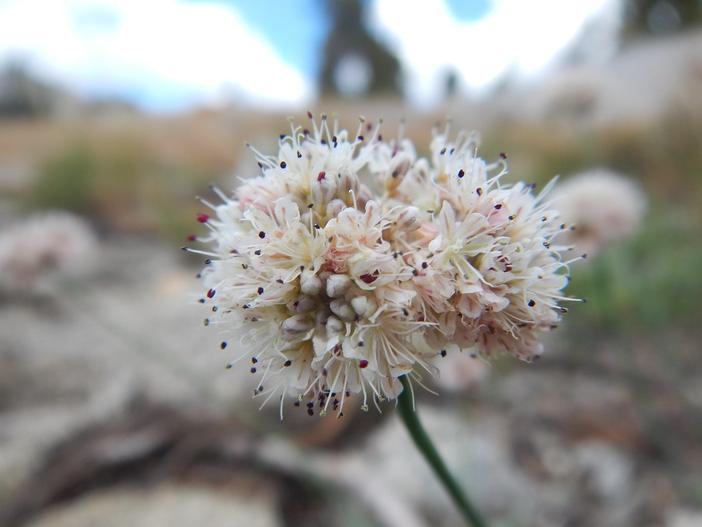Naked Buckwheat
(Eriogonum nudum)
Naked Buckwheat (Eriogonum nudum)
/
/

Matt Lavin
CC BY-SA 2.0
Image By:
Matt Lavin
Recorded By:
Copyright:
CC BY-SA 2.0
Copyright Notice:
Photo by: Matt Lavin | License Type: CC BY-SA 2.0 | License URL: https://creativecommons.org/licenses/by-sa/2.0/ | Uploader: Matt Lavin | Publisher: Flickr










































Estimated Native Range
Summary
Eriogonum nudum, commonly known as Naked Buckwheat, is a perennial herb that is native to a variety of habitats in the Pacific Northwest, including chaparral, coastal sage scrub, oak woodlands, and montane regions. It typically grows up to six feet tall from a basal rosette of flat green leaves. The plant features tall, bare stems that bifurcate into more stems topped with clusters of white, pale pink, or yellow flowers from mid-summer to fall. The flowers are highly attractive to pollinators and are especially important for native bees and butterflies, with at least one butterfly subspecies relying on it as a primary food source.
Naked Buckwheat is valued for its adaptability to different environments and its low maintenance requirements, making it a suitable choice for native plant gardens, xeriscaping, and habitat restoration projects. It thrives in full sun to part shade and prefers well-drained soils, tolerating a range of soil types from sandy to loamy. While it can survive with minimal water once established, moderate irrigation will support more robust growth. This species is not commonly associated with significant diseases or pests, but overwatering can lead to root rot. It is also known for its resilience in the face of drought and poor soil conditions.CC BY-SA 4.0
Naked Buckwheat is valued for its adaptability to different environments and its low maintenance requirements, making it a suitable choice for native plant gardens, xeriscaping, and habitat restoration projects. It thrives in full sun to part shade and prefers well-drained soils, tolerating a range of soil types from sandy to loamy. While it can survive with minimal water once established, moderate irrigation will support more robust growth. This species is not commonly associated with significant diseases or pests, but overwatering can lead to root rot. It is also known for its resilience in the face of drought and poor soil conditions.CC BY-SA 4.0
Plant Description
- Plant Type: Shrub, Herb
- Height: 2-5 feet
- Width: 1-2 feet
- Growth Rate: Moderate
- Flower Color: Cream, Pink, White, Yellow
- Flowering Season: Spring, Summer, Fall
- Leaf Retention: Semi-deciduous
Growth Requirements
- Sun: Full Sun
- Water: Low, Medium
- Drainage: Fast, Medium
Common Uses
Bee Garden, Butterfly Garden, Drought Tolerant, Low Maintenance, Rock Garden
Natural Habitat
native to a variety of habitats in the Pacific Northwest, including chaparral, coastal sage scrub, oak woodlands, and montane regions
Other Names
Common Names: Nude Buckwheat, Nakedstem Buckwheat, Naked-Stemmed Buckwheat
Scientific Names: , Eriogonum nudum, Eriogonum arachnoideum, Eriogonum latifolium subsp. nudum, Eriogonum latifolium var. parvulum, Eriogonum longulum, Eriogonum nudum, Eriogonum nudum var. perturbum, Eriogonum oblanceolatum,
GBIF Accepted Name: